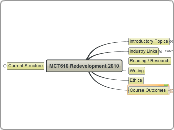von Shelbi Menzie Vor 11 Jahren
393
Chapter 7 and 8
Tangent, secant, and cotangent functions are explored in terms of their mathematical properties and graphical characteristics. The tangent function has a domain of all real numbers except specific points, with a range encompassing all real numbers, and it is an odd function with symmetry about the origin.









